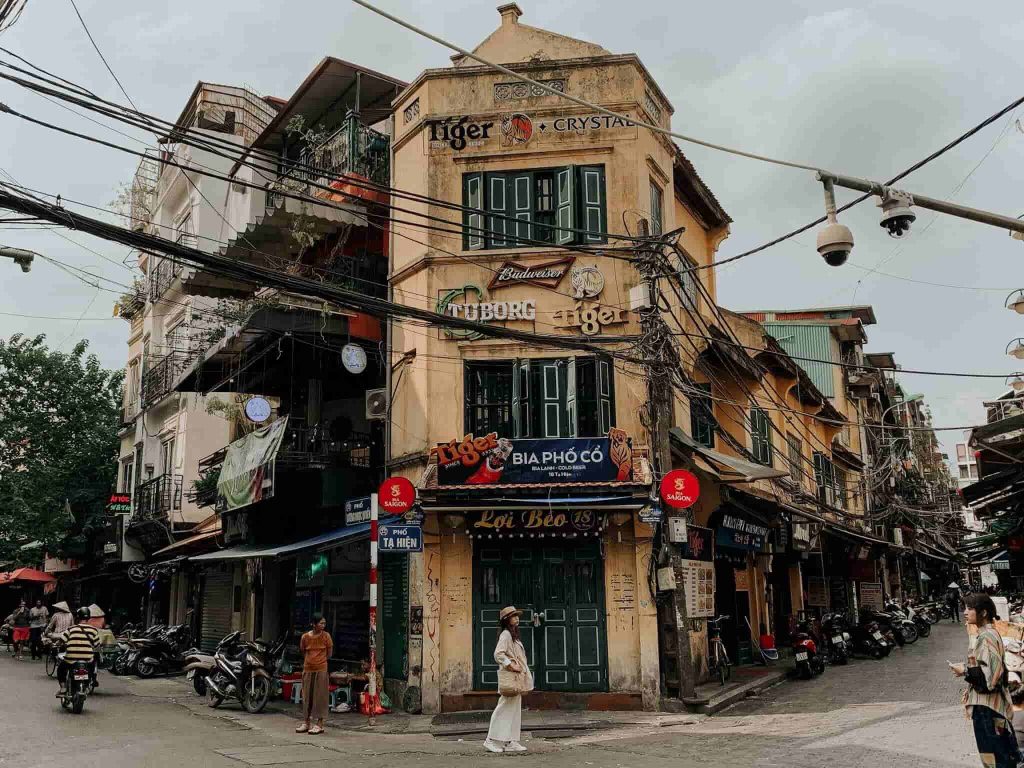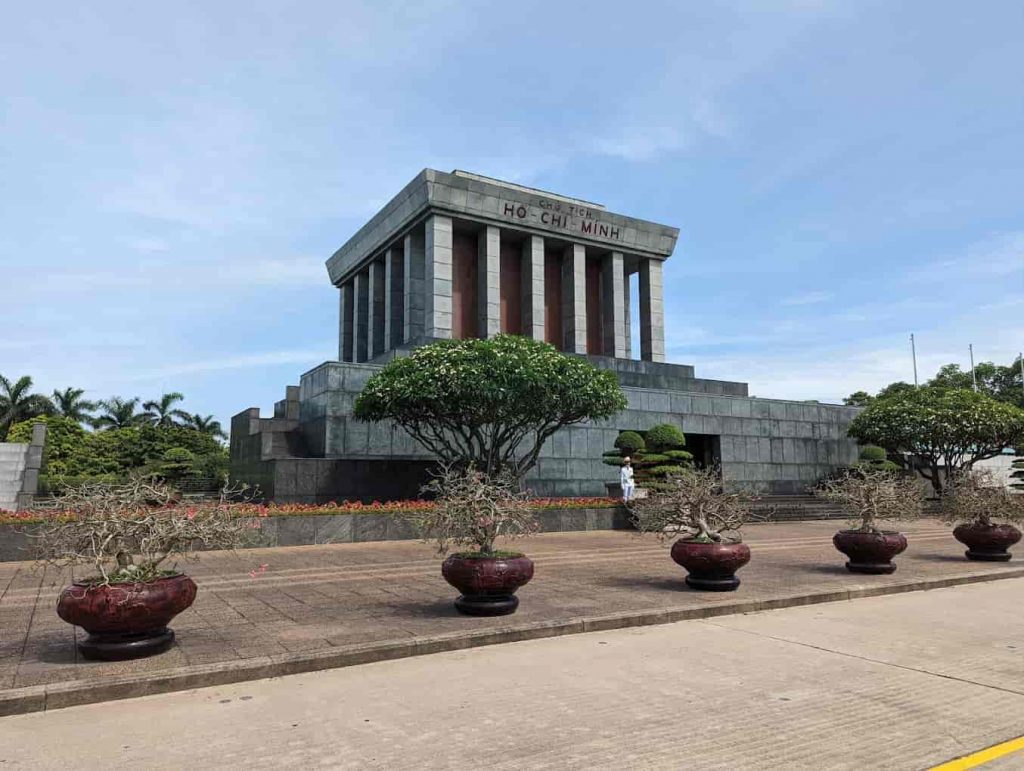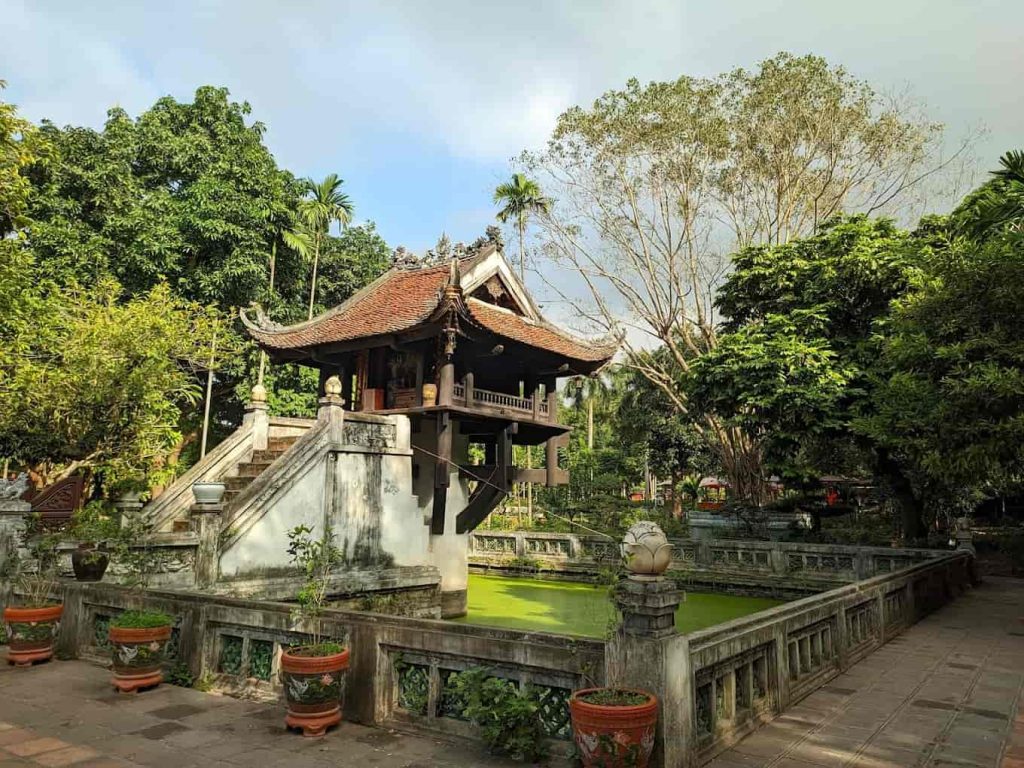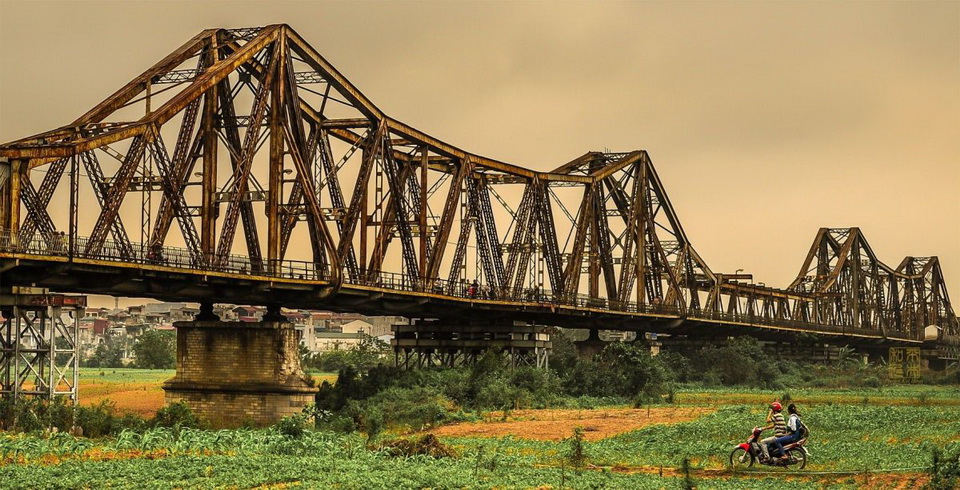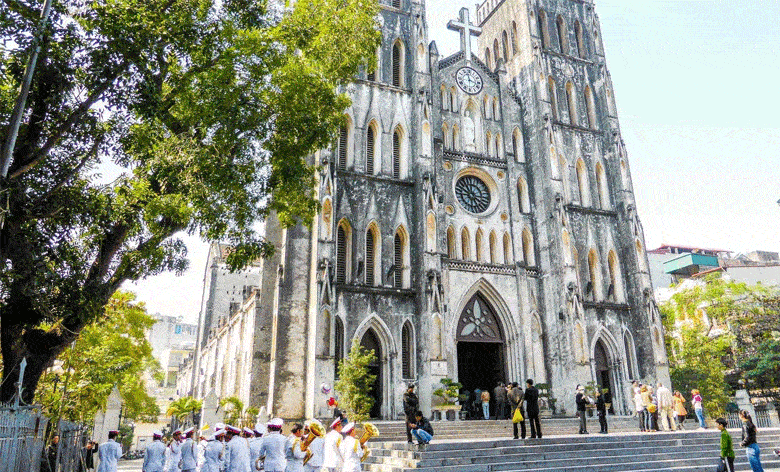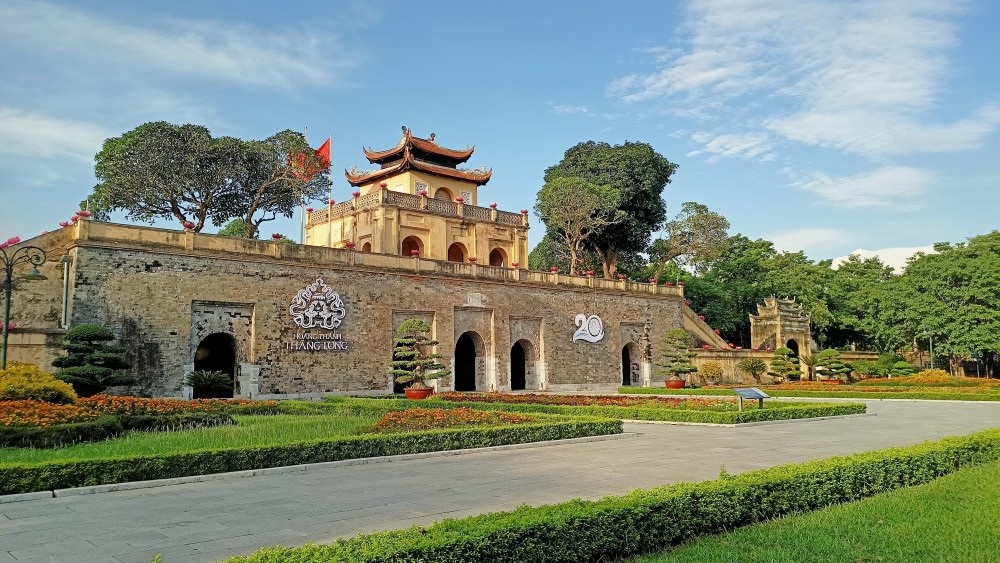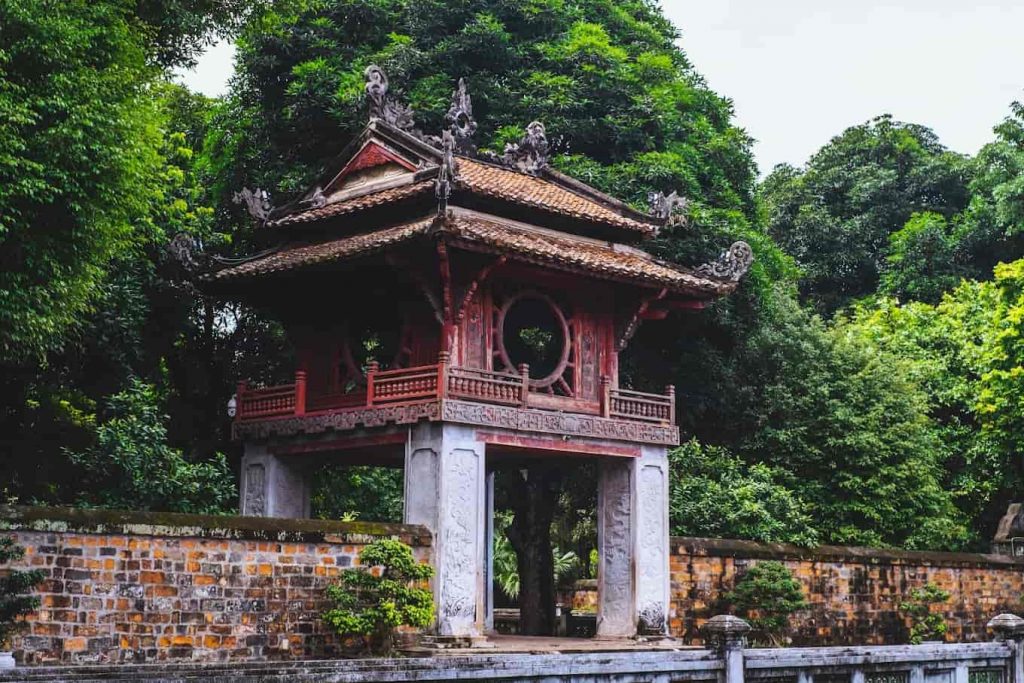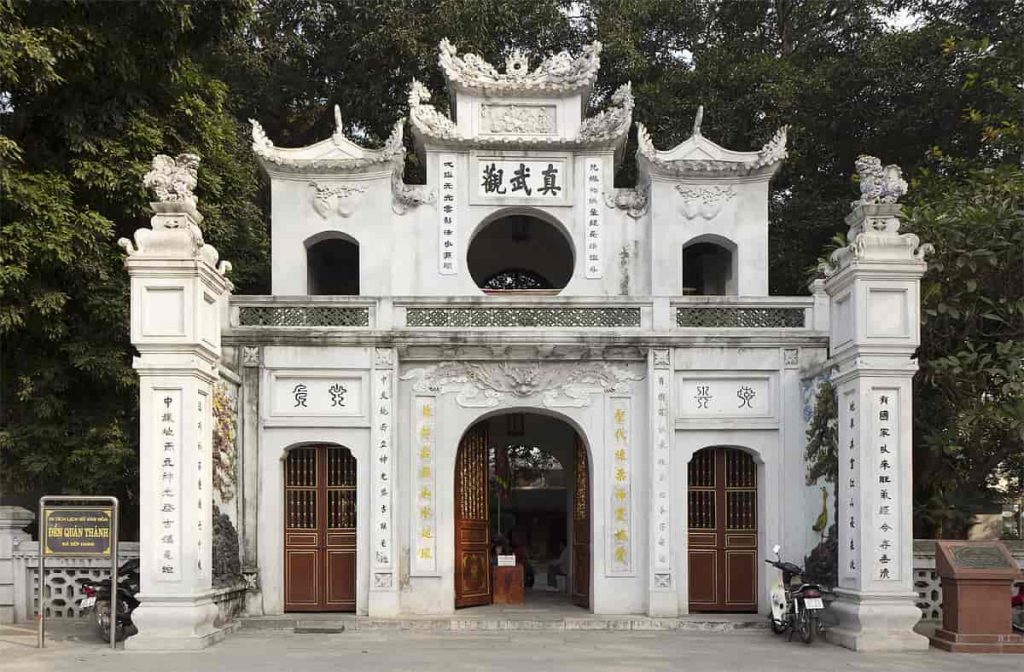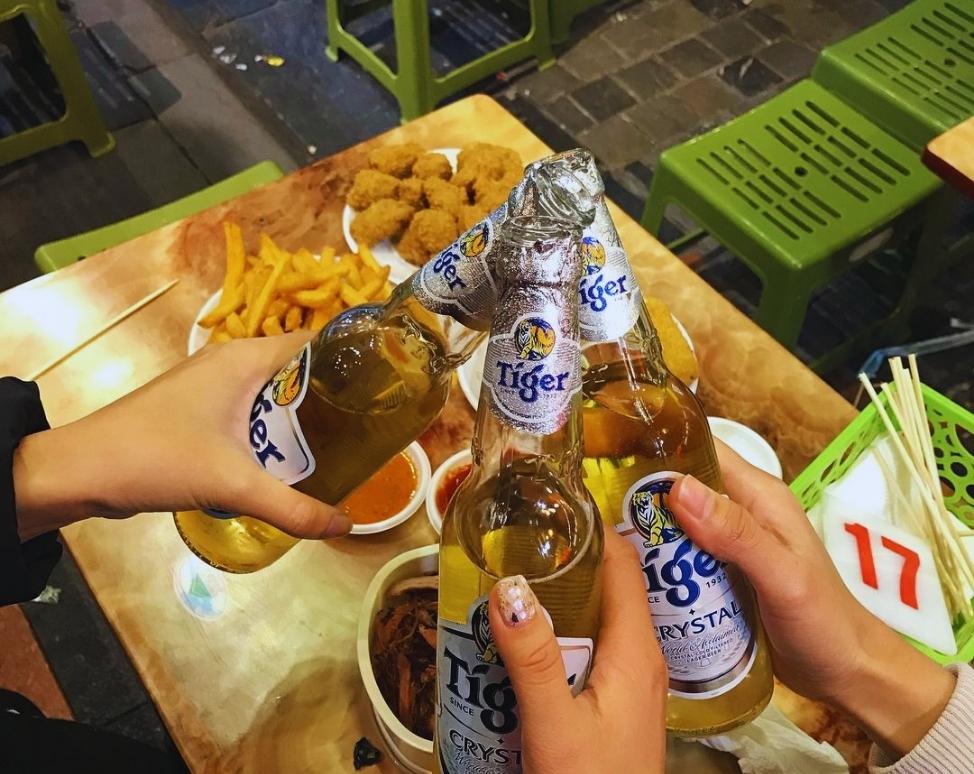If Hanoi is the economic and cultural center of Vietnam, then President Ho Chi Minh’s Mausoleum is the heart of the capital. Not only is it a cultural and historical landmark, but it is also a famous tourist attraction that attracts visitors from both inside and outside the country who wish to show their gratitude to the beloved father of the Vietnamese nation. Here, you can directly see Uncle Ho, admire the vast scenery of the square, and explore many surrounding attractions. If you are planning a trip to Hanoi and intend to visit President Ho Chi Minh’s Mausoleum but are unsure about the timing, regulations, etc., then take note of the following instructions to ensure a smooth journey.
Learn about President Ho Chi Minh’s Mausoleum
Location of President Ho Chi Minh’s Mausoleum
President Ho Chi Minh’s Mausoleum, also known as Uncle Ho’s Mausoleum, is the final resting place and memorial site of the esteemed leader Ho Chi Minh. The construction of the mausoleum commenced on September 2, 1973, and was completed in 1975 on the site of the former Ba Dinh Square. Presently, the mausoleum is located at 2 Hung Vuong Street, Dien Bien Ward, Ba Dinh District, Hanoi.

Architecture of President Ho Chi Minh’s Mausoleum
President Ho Chi Minh’s Mausoleum is constructed with tens of thousands of cubic meters of stone, with a total height of 21.6 meters and a width of 41.2 meters. Its structure consists of three layers: the bottom and the top are in a three-tiered shape, while the middle layer houses the sarcophagus, corridors, and stairs. The outer surface is clad in gray granite, while the interior is made of polished red and gray stone. Besides the surface and the floor, the stairs are adorned with granite. The main door is covered in glossy black stone, and the walls and columns are made of marble. The inscription “Chủ tịch Hồ Chí Minh” is composed of stone from the Cao Bang region.

The room of President Ho Chi Minh is specifically lined with marble from Ha Tay. The two large flags of the Party and the Fatherland are assembled from 4,000 pieces of ruby stone taken from Thanh Hoa. The images of the hammer and sickle and the five-pointed star are crafted from brightly colored marble. The two sets of wooden doors were sent by compatriots from the South and were crafted by artisans from Nghe An, Nam Ha, and Ha Bac. With such scale and meticulousness, President Ho Chi Minh’s Mausoleum deserves to be considered the greatest cultural and artistic work in Vietnam.
Does President Ho Chi Minh’s Mausoleum sell tickets for visiting?
According to regulations, there is no entrance fee for visiting President Ho Chi Minh’s Mausoleum. Both Vietnamese citizens and foreign tourists do not have to pay any fees when visiting the mausoleum to pay respects to Uncle Ho, including the surrounding areas such as Ba Dinh Square in Hanoi, the One Pillar Pagoda, and the Ho Chi Minh Museum.
Experience of visiting President Ho Chi Minh’s Mausoleum
Schedule and opening hours of President Ho Chi Minh’s Mausoleum in Hanoi
According to the travel experience in Hanoi, to meet the needs of tourists, organizations, and delegations from many places around the world coming to visit, President Ho Chi Minh’s Mausoleum opens on all days of the week, except Monday and Friday. If it falls on holidays/festivals, it still opens as usual. However, the opening hours will vary between weekdays and holidays, weekends, and also depend on the season.
- Summer season (from April 1 to October 31): The mausoleum opens to welcome visitors at 7:30 a.m. and closes at 10:30 a.m. On weekends and holidays, visitors are allowed until 11:00 a.m.
- Cold season (from November 1 to March 31 of the following year): The mausoleum opens at 8:00 a.m. and closes at 11:00 a.m. on weekdays, and closes at 11:30 a.m. on holidays and weekends.
How to get to President Ho Chi Minh’s Mausoleum?
To travel to President Ho Chi Minh’s Mausoleum, you can use both private and public transportation. If you’re using private transportation, you can park your vehicle at Ông Ích Khiêm Street (opposite the Ministry of Defense) or at 19 Ngọc Hà Street near the entrance gate of the Ho Chi Minh Museum.
For those using public transportation, you can take bus numbers 09, 18, 22, 33, 45, or 50. These bus routes all stop at 18A Lê Hồng Phong – the closest stop to the mausoleum. Additionally, you can also consider using the double-decker Your Vacation Travel buses for added convenience in transportation.
Moreover, to facilitate visits to President Ho Chi Minh’s Mausoleum or many other tourist destinations in Hanoi, using a transportation service is necessary. With the private travel car service with driver in Hanoi from DanangPrivateCar.com, you can fulfill that need. With door-to-door transfer service, experienced drivers, and newly equipped cars with drinks and Wi-Fi, you’ll have the best trip to Hanoi. Contact us now to arrange your itinerary.
How to visit President Ho Chi Minh’s Mausoleum?
Visiting President Ho Chi Minh’s Mausoleum
President Ho Chi Minh’s Mausoleum is a rendezvous point, a place where the sacred emotions of millions of people from all over the country as well as international tourists converge. Visiting President Ho Chi Minh’s Mausoleum is seen by everyone as an emotional need, a beauty in tradition and customs aimed at expressing gratitude to the roots. All, young and old, from remote areas to the plains, regardless of position or religion, yearn for a visit to Uncle Ho.

Upon entering the mausoleum, the first sensation you’ll feel is the solemn and serene atmosphere. Your heart, your eyes will pause and cannot help but be moved and overwhelmed as you stand beside and gaze upon Uncle Ho peacefully resting in eternal sleep.
Visiting surrounding areas around President Ho Chi Minh’s Mausoleum
After paying respects at President Ho Chi Minh’s Mausoleum, tourists should explore this area in the following order: Stilt House, Uncle Ho’s Fish Pond, Ho Chi Minh Museum, and finally, One Pillar Pagoda. From the entrance gate to the museum, follow the directions of the management board or the crowd ahead. The pathway from the mausoleum to President Ho Chi Minh’s Stilt House is beautiful, with fruit-laden trees, a clear blue pond teeming with colorful fish, and a refreshingly cool atmosphere. You can visit the modest, small house to learn more about the daily life of the leader. Next, explore the museum, where President Ho Chi Minh’s achievements and career during the years of struggle are preserved.

Lastly, visit One Pillar Pagoda – a structure that holds the record for the most unique architecture. The pagoda is also known as the thousand-year-old lotus of the capital, one of the symbols that instantly evoke thoughts of Hanoi. Therefore, if you’re here, take the time to admire its beauty and offer prayers at the pagoda!
Attending the flag raising and lowering ceremony at President Ho Chi Minh’s Mausoleum
In front of President Ho Chi Minh’s Mausoleum stands a 29-meter flagpole, where the flag raising and lowering ceremony, a national-level ritual, takes place every morning and evening. The flag raising ceremony begins at 6 a.m. At this time, the procession starts from behind the mausoleum, led by the Victory Flag, followed by a squad of 34 soldiers. The procession moves in a circle to the tune of the song “Advancing under the flag,” heading towards the flagpole. Three soldiers in red uniforms step forward to prepare for the flag raising rituals, and at this moment, the mausoleum’s door opens. Upon the command, the flag is hoisted and flies accompanied by singing. The flag is raised to the top of the pole, and the squad of soldiers marches around the mausoleum before concluding the ceremony.
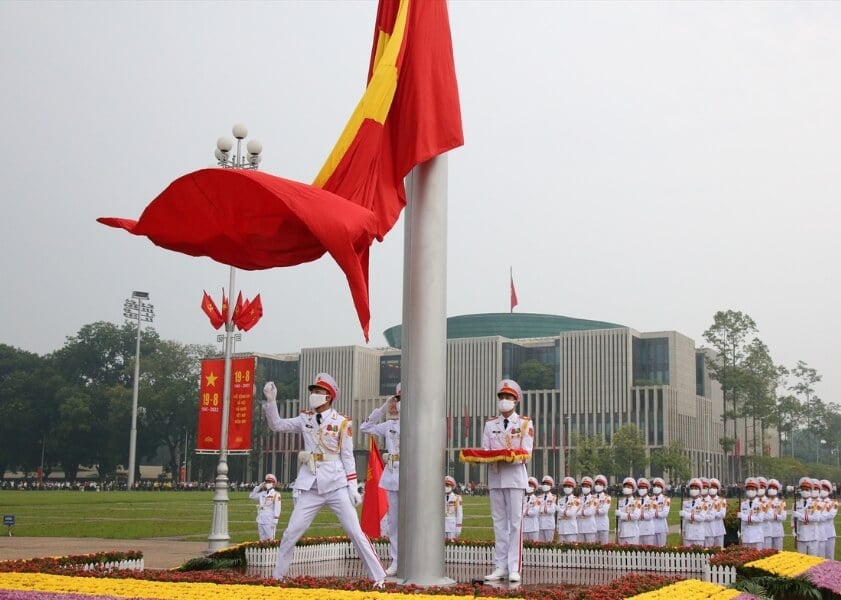
At 9 p.m. on the same day, the flag lowering ceremony takes place, following a similar protocol to the flag raising ceremony. The flag ceremony is conducted with great solemnity and reverence to uphold the image of the red flag with a yellow star of the Fatherland and demonstrate respect for the country.
Notes when visiting President Ho Chi Minh’s Mausoleum
- President Ho Chi Minh’s Mausoleum is a solemn place with political significance, so pay attention to your attire. Avoid wearing revealing or overly short clothing, it’s best to dress neatly and respectfully to show your reverence.
- Maintain orderliness when entering the mausoleum, walk lightly, speak softly, and queue up properly to wait your turn for visiting. Avoid speaking loudly, especially joking around, and remember to remove your hat, and refrain from putting your hands in your pockets.
- Photography and filming inside the mausoleum are not allowed to ensure the safety of the mausoleum and the remains of the person. Especially, absolutely do not bring food or drinks from outside.
- If you want to skip the queue when visiting President Ho Chi Minh’s Mausoleum, you can apply for a special permit from the Command Headquarters, but remember to apply at least 2-3 days in advance.
- Children under 3 years old are not allowed inside the mausoleum (according to the regulations of the Mausoleum), so if you have young children with you, make arrangements for someone to look after them if you wish to enter.
Visiting President Ho Chi Minh’s Mausoleum is an interesting experience in your journey to explore Hanoi. If you are from afar and have not had the opportunity to visit yet, remember these tips and plan your trip to see President Ho Chi Minh’s Mausoleum with your own eyes!




